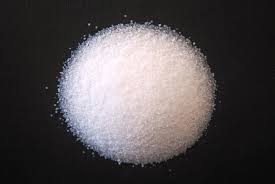
Dec . 21, 2024 14:11 Back to list
16-16-8 fertilizer manufacturer
Understanding 16-16-8 Fertilizer A Comprehensive Guide
Fertilizers play a crucial role in modern agriculture and gardening, providing essential nutrients to plants for optimal growth and productivity. Among the wide array of fertilizers available in the market, the 16-16-8 formulation stands out for its balanced nutrient composition. In this article, we will explore the significance of the 16-16-8 fertilizer, its components, benefits, and usage tips.
What Does 16-16-8 Mean?
The numbers in the formulation 16-16-8 represent the percentage by weight of three crucial macronutrients nitrogen (N), phosphorus (P), and potassium (K). In this case, the numbers indicate that
- 16% Nitrogen Essential for vegetative growth, nitrogen promotes the development of leaves and stems. It is a key component of chlorophyll, the molecule responsible for photosynthesis. - 16% Phosphorus This nutrient is vital for root development as well as flower and fruit production. Phosphorus helps in energy transfer and is crucial for the formation of DNA and genetic material in plants. - 8% Potassium Potassium is important for the overall health of the plant. It aids in water regulation, enzyme activation, and disease resistance. Sufficient potassium contributes to strong stalks and improved fruit quality.
The Benefits of Using 16-16-8 Fertilizer
1. Balanced Nutritional Support The 16-16-8 formulation provides a balanced supply of essential nutrients, making it suitable for a wide range of plants, including vegetables, flowers, and shrubs. This balance helps in promoting well-rounded growth and development.
2. Versatile Application One of the significant advantages of this fertilizer is its versatility. It can be used in various growing conditions, whether in gardens, landscaped areas, or agricultural fields. The balanced nutrients support both flowering plants and those grown for foliage.
3. Promotes Healthy Root Development With a decent percentage of phosphorus, the 16-16-8 fertilizer encourages robust root development. Healthy roots are vital for nutrient uptake and overall plant stability.
4. Improved Disease Resistance The right nutrient management, including adequate potassium levels, can enhance a plant’s ability to withstand diseases and pests.
16-16-8 fertilizer manufacturer

5. Instant Availability of Nutrients Unlike slow-release fertilizers, the nutrients in 16-16-8 fertilizer are immediately available to plants. This feature makes it an excellent choice for quick nutrient uptake, particularly during the peak growing season.
How to Use 16-16-8 Fertilizer
1. Soil Testing Before applying any fertilizer, it is advisable to conduct a soil test. This test will help determine the existing nutrient levels and whether 16-16-8 is appropriate for your specific situation.
2. Application Timing The best times to apply 16-16-8 fertilizer are during the early spring and late summer, aligning with plant growth cycles. For certain crops, multiple applications throughout the growing season may be beneficial.
3. Application Method The fertilizer can be applied using various methods—broadcasting over the soil, incorporating it into the topsoil, or applying it in a liquid form. Ensure even distribution to avoid localized nutrient excess or deficiency.
4. Watering After application, adequate watering is essential to help dissolve the fertilizer and enable nutrient uptake by the roots.
5. Monitor Plant Health Regularly observing plant growth and health after fertilizer application will help assess the effectiveness of the fertilizer and make adjustments as necessary.
Conclusion
The 16-16-8 fertilizer is an excellent resource for gardeners and farmers seeking a balanced nutrient solution. Its unique formulation supports various types of plants, ensuring robust growth, vibrant blooms, and healthy yields. By understanding its components and application techniques, users can maximize its benefits and cultivate thriving gardens and crops. Whether you are a novice gardener or an experienced farmer, integrating 16-16-8 fertilizer into your nutrient management plan can lead to impressive results.
-
10 10 10 Fertilizer Organic—Balanced NPK for All Plants
NewsJul.30,2025
-
Premium 10 10 10 Fertilizer Organic for Balanced Plant Growth
NewsJul.29,2025
-
Premium 10 10 10 Fertilizer Organic for Balanced Plant Growth
NewsJul.29,2025
-
Premium 10 10 10 Fertilizer Organic for Balanced Plant Growth
NewsJul.29,2025
-
50 Pound Bags of 13-13-13 Fertilizer for All Plants – Bulk & Organic Options
NewsJul.28,2025
-
High-Efficiency 15-30-15 Granular Fertilizer for Healthy Crops
NewsJul.28,2025
